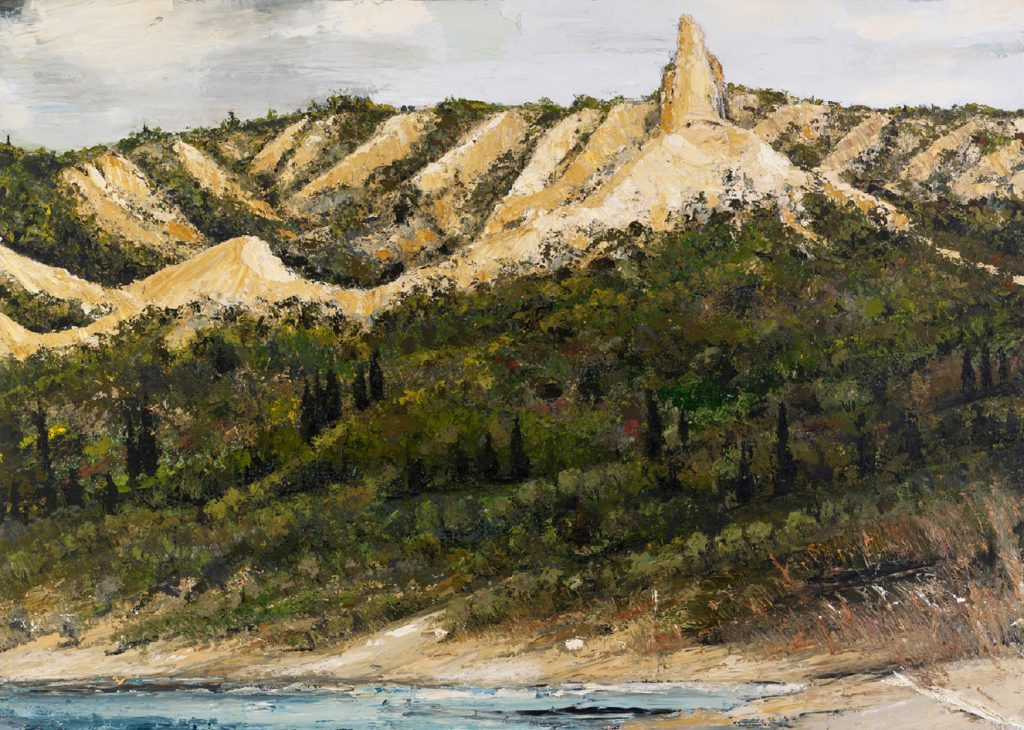The Art: The Sphinx, Perpetual Peace
The Artist: Amanda Penrose Hart
The Work:
April 25, 1915.
The Australian and New Zealand Army Corps, soon to be officially known as the ANZACs, arrive at Ari Burnu, where the stage is set for each nation’s very first land battle.
The landing is a disaster. ANZAC casualties are estimated between 800 and 1000 by day’s end, with another 1000 wounded, primarily due to poor navigation, and extreme terrain that had not been properly represented at the scale used in standard issue maps.
Besides Ari Burnu itself – renamed Anzac Cove in 1985 by the Turkish government – one element of this terrain considered particularly sacred to Australian and New Zealand forces is The Sphinx, a yellow-ridged hill that reminded them of the iconic statue that had stood not far from their training camp in Egypt.
It is this hill, seen from the beach of Anzac Cove, that Sydney artist Amanda Penrose Hart has captured with oil on linen in her 2017 Gallipoli Art Prize winning work The Sphinx, Perpetual Peace.
The hill seems calm, even beautiful. The vegetation lush and vibrant. And they are, but for a harrowing reason.
Penrose Hart attempted to climb the daunting hill twice, and each time came across the remains of Australian and Turkish soldiers, revealed by the erosion of top soil from recent rains.
“There were so many people (who) died there and that’s why it’s so full of bones, and the vegetation grew and grew because there’s so much blood and bone in the hills.”
It’s a haunting thought, one that captures the horrifying reality of war, and the sacrifices made by those who took to the battlefield in any capacity.
The Gallipoli Art Prize is open to Australian, New Zealand and Turkish citizens, and invites artists to submit work that reflect on the ANZAC qualities: loyalty, respect, courage, comradeship, and love of country.
The Sphinx, Perpetual Piece and 38 other submissions are on show at the Gallipoli Memorial Club, Circular Quay, from April 20 to 28.

